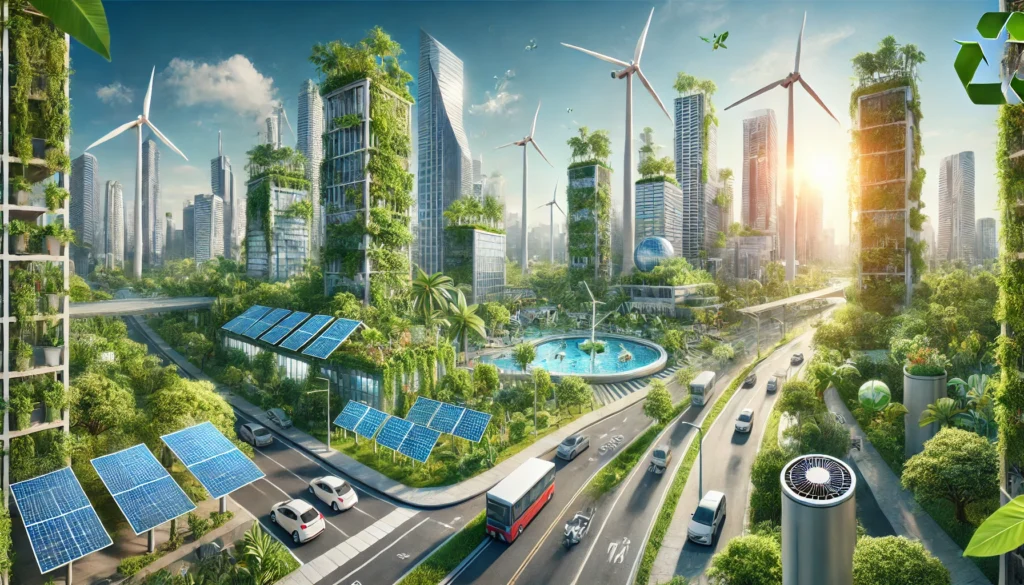
How Green Technology Is Changing the World
Introduction
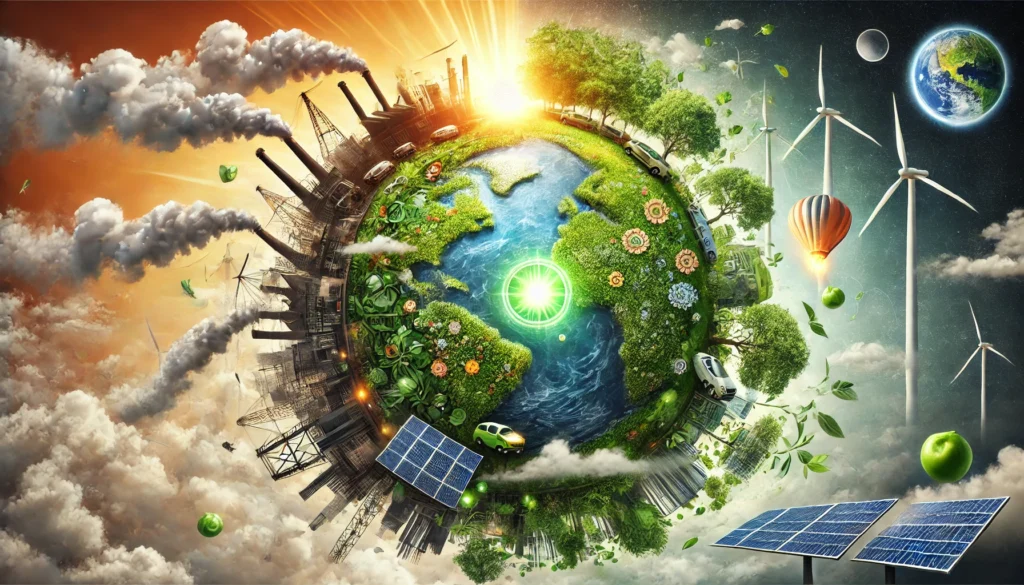
Green technology, also known as sustainable technology, is reshaping the way we interact with the environment. As climate change becomes a pressing global issue, green technology is offering innovative solutions to reduce carbon footprints, conserve resources, and create a sustainable future. From renewable energy to eco-friendly manufacturing, the world is witnessing a shift towards technologies that harmonize with nature.
In a world grappling with the consequences of climate change, dwindling natural resources, and environmental degradation, green technology emerges as a beacon of hope. Also known as eco-technology or sustainable technology, green tech encompasses innovations designed to minimize negative environmental impacts while promoting sustainable practices.
This comprehensive guide explores the historical evolution of green technology, its diverse applications, real-world examples, challenges, and the future potential it holds in reshaping our planet.
This article dives deep into how green technology is transforming industries, communities, and the global ecosystem while addressing challenges and opportunities for a greener planet.
The Importance of Green Technology
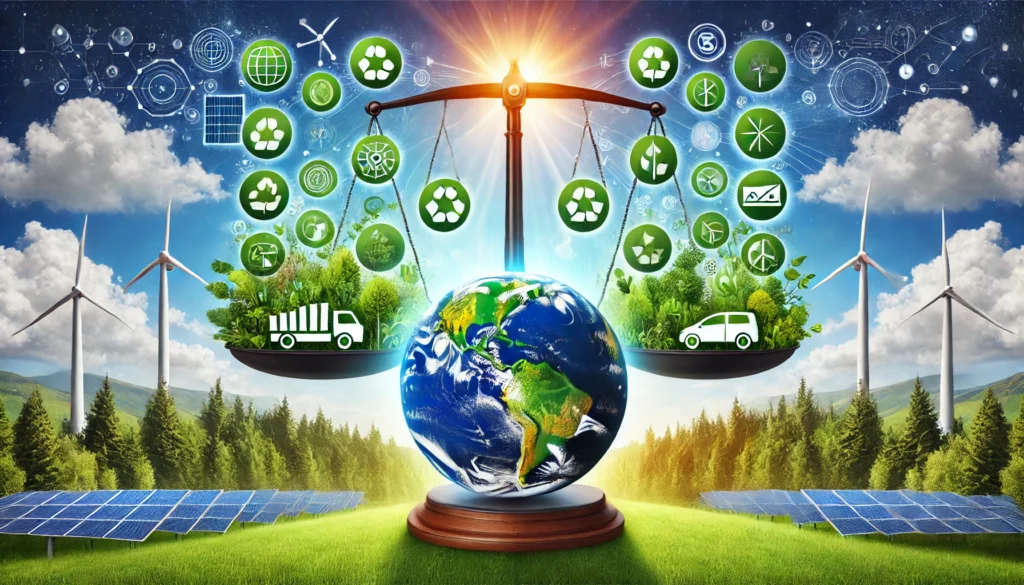
- Combating Climate Change
Climate change poses one of the biggest threats to our planet. Green technology provides tools to mitigate its effects by reducing greenhouse gas emissions and promoting renewable energy sources such as solar, wind, and hydroelectric power.
- Resource Conservation
Traditional industries often rely on non-renewable resources. Green technologies emphasize resource efficiency through practices like recycling, upcycling, and sustainable production, reducing waste and preserving resources for future generations.
- Economic Benefits
Green technology stimulates job creation in renewable energy, sustainable agriculture, and eco-friendly manufacturing sectors. The growth of green jobs contributes to economic stability while promoting environmental sustainability.
- Improved Quality of Life
By reducing pollution, green technology enhances air and water quality, leading to better health outcomes and a higher quality of life for communities worldwide.
Types of Green Technologies
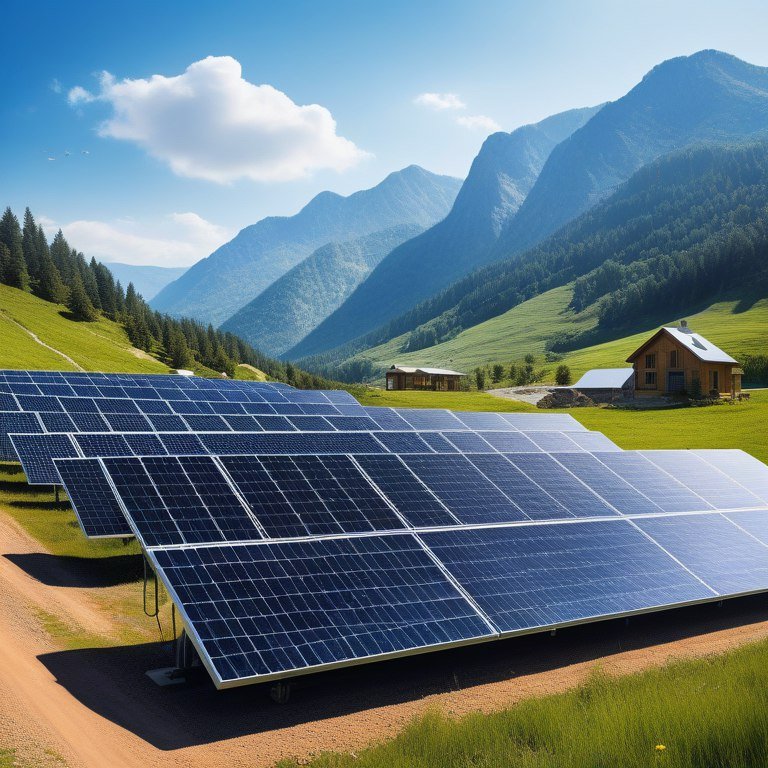
- Renewable Energy Technologies
Solar Energy: Solar panels convert sunlight into electricity, providing a clean, renewable energy source.
Wind Energy: Wind turbines generate electricity without emitting harmful pollutants.
Hydropower: Water flow is harnessed to produce energy, often in eco-friendly ways.
- Sustainable Agriculture
Technologies like vertical farming, precision agriculture, and organic farming methods reduce water usage, enhance crop yields, and minimize environmental harm.
- Green Building Technologies
Eco-friendly construction materials, energy-efficient designs, and smart home systems are revolutionizing how buildings are designed and maintained.
- Waste Management Innovations
Recycling technologies, biodegradable materials, and waste-to-energy systems help manage waste more effectively, reducing landfill dependency.
- Electric and Hybrid Vehicles
Electric cars and hybrid vehicles reduce reliance on fossil fuels, offering cleaner transportation alternatives that contribute to lower air pollution levels.
Real-World Examples of Impact

- Denmark’s Renewable Energy Success
Denmark leads the way in wind energy, with over 40% of its electricity generated from wind turbines. This shift has significantly reduced the country’s carbon footprint.
- Tesla’s Electric Revolution
Tesla has popularized electric vehicles, proving that eco-friendly transportation can be both practical and desirable, setting a benchmark for the automotive industry.
- Waste Management in Sweden
Sweden’s innovative waste-to-energy system processes 99% of its household waste, with a significant portion converted into energy for heating homes.
- Vertical Farming in Singapore
Limited by land space, Singapore has adopted vertical farming to grow crops sustainably, reducing reliance on imported food.
Challenges and Future Potential

Challenges
High Initial Costs: The upfront investment for green technologies can be prohibitive for small businesses and developing countries.
Technological Barriers: Some regions lack the infrastructure to implement advanced green technologies.
Resistance to Change: Transitioning from traditional methods to sustainable practices often faces resistance due to cultural or economic reasons.
Future Potential
The future of green technology is promising. Advancements in artificial intelligence and biotechnology are expected to optimize resource efficiency further. Innovations like carbon capture and storage (CCS) and hydrogen fuel cells hold immense potential to reduce global emissions.
How Individuals and Businesses Can Contribute

Individuals
Reduce energy consumption by using energy-efficient appliances.
Support sustainable brands and products.
Educate yourself and others about the benefits of green technology.
Businesses
Invest in renewable energy systems for operations.
Adopt sustainable supply chain practices.
Partner with green technology innovators to enhance eco-friendly solutions.
The Historical Context of Green Technology

The concept of green technology is not new. Throughout history, humans have relied on sustainable practices like crop rotation and water conservation. However, the industrial revolution ushered in an era of rapid technological advancement at the expense of environmental health.
The environmental movement of the 1960s and 1970s laid the groundwork for modern green technology. Key milestones include:
1970: The first Earth Day, raising global awareness of environmental issues.
1987: The Brundtland Report defined sustainable development as meeting the needs of the present without compromising future generations.
1997: The Kyoto Protocol, an international agreement to reduce greenhouse gas emissions, emphasized the need for eco-friendly innovations.
The Role of Green Technology Today

Green technology today spans multiple industries, offering solutions to some of humanity’s most pressing challenges.
- Renewable Energy Revolution
Renewable energy sources like solar, wind, and geothermal are at the forefront of green technology. These energy solutions drastically reduce carbon emissions while ensuring energy security.
- Smart Cities and IoT
The Internet of Things (IoT) enables cities to optimize energy usage, manage waste efficiently, and reduce traffic congestion, paving the way for smarter, greener urban living.
- Carbon Capture and Storage (CCS)
Technologies that capture carbon dioxide from industrial processes prevent it from entering the atmosphere, mitigating climate change.
- Circular Economy Models
Green tech promotes a circular economy, where resources are reused and recycled instead of following the traditional “take-make-dispose” model.
Key Sectors Transforming Through Green Technology
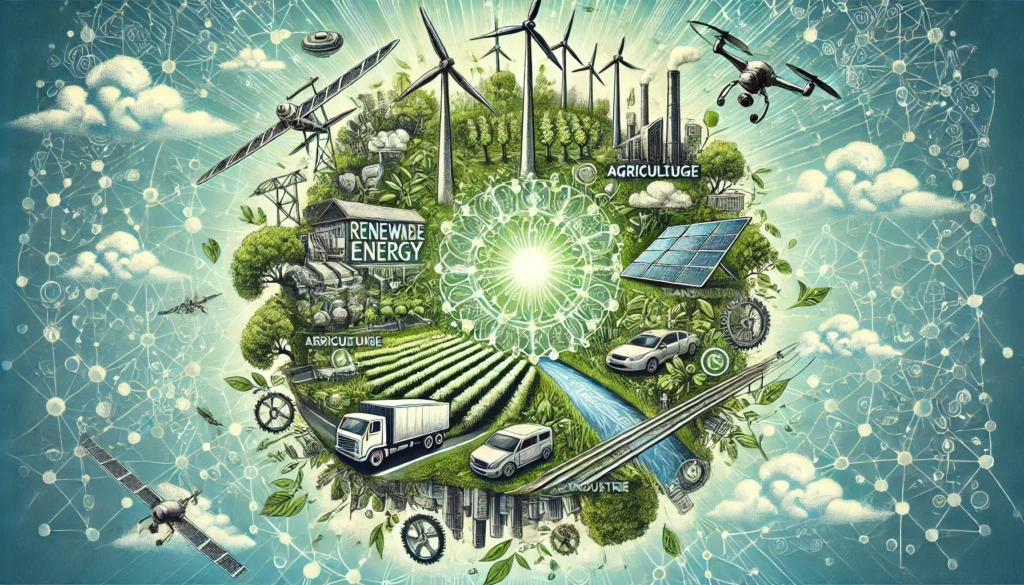
- Agriculture and Food Production
Precision Agriculture: Sensors and AI-driven tools monitor soil health and water usage, reducing waste and maximizing yields.
Alternative Proteins: Lab-grown meat and plant-based diets reduce greenhouse gas emissions associated with traditional livestock farming.
- Construction and Housing
Net-Zero Buildings: Structures that generate as much energy as they consume.
Eco-Friendly Materials: Bamboo, recycled steel, and other sustainable materials are replacing traditional, energy-intensive options.
- Transportation
Electric Vehicles (EVs): Companies like Tesla and Rivian are leading the charge in revolutionizing how we commute.
Public Transport: Electric buses and trains reduce urban air pollution.
- Water Conservation
Desalination Plants: Green desalination methods turn seawater into drinkable water with minimal environmental impact.
Smart Water Management: IoT systems monitor water leaks and usage to ensure efficiency.
Emerging Innovations in Green Technology
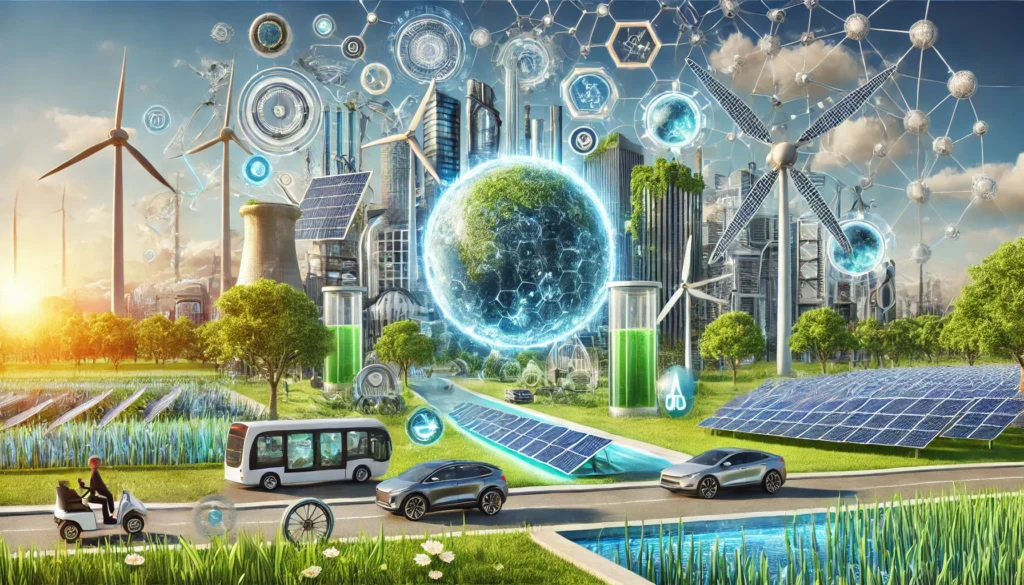
- Hydrogen Fuel Cells
Hydrogen, the most abundant element, is being used as a clean energy source in transportation and industrial processes.
- Biodegradable Plastics
Innovations in plastics that degrade naturally reduce pollution and protect marine life.
- Vertical Ocean Farming
Underwater farming techniques are being used to cultivate seaweed, a sustainable food source and biofuel.
- Blockchain for Sustainability
Blockchain technology is being used to track carbon credits and ensure transparency in supply chains.
Global Leaders in Green Technology
Norway: Over 60% of new cars sold are electric.
China: The world leader in solar panel production and installation.
Costa Rica: Runs on 99% renewable energy.
Germany: A pioneer in wind energy and smart grid systems.
Challenges Facing Green Technology
- High Costs
The upfront cost of green technologies, such as solar panels and electric vehicles, can deter widespread adoption.
- Lack of Awareness
Many communities remain unaware of the benefits of green technology, hindering its global implementation.
- Infrastructure Limitations
Developing countries face challenges in building the infrastructure required for green technologies.
Future Potential of Green Technology
Green technology is poised to drive significant changes across industries. Key future trends include:
Artificial Intelligence in Sustainability: AI will optimize energy usage and predict environmental impacts.
Space-Based Solar Power: Collecting solar energy in space and transmitting it to Earth.
Bioengineering Solutions: Genetically engineered plants that absorb more CO2.
How You Can Support Green Technology
Individuals
Switch to renewable energy providers for your home.
Reduce waste by practicing recycling and composting.
Opt for energy-efficient appliances and LED lighting.
Businesses
Invest in green certifications to showcase commitment to sustainability.
Partner with eco-friendly suppliers.
Transition to a paperless office to reduce deforestation.
FAQs
- What is green technology?
Green technology refers to innovations that reduce environmental harm and promote sustainability.
- How does green technology combat climate change?
It reduces greenhouse gas emissions through renewable energy, carbon capture, and eco-friendly practices.
- What are the most impactful green technologies?
Renewable energy, electric vehicles, biodegradable plastics, and vertical farming are among the most impactful.
- How can individuals support green technology?
Adopt renewable energy, reduce waste, and support eco-friendly products.
- What is the future of green technology?
The future includes AI-driven sustainability, space-based solar power, and revolutionary bioengineering solutions.
Conclusion
Green technology is not just a solution—it’s a revolution. It offers humanity a chance to undo the environmental damage caused over centuries while ensuring a brighter, sustainable future. By embracing green technology, we can create a world where economic growth and environmental conservation coexist harmoniously.
It’s time to act. The future of our planet depends on the choices we make today.
Green technology is not just a trend—at’s a necessity for our survival. As the world embraces eco-friendly innovations, the vision of a cleaner, healthier, and more sustainable future becomes achievable. By investing in and supporting green technology, individuals and businesses can collectively contribute to preserving our planet for generations to come.
Let’s make the shift towards a greener world today!







2 thoughts on “How Green Technology Is Disrupting the World in 2024”